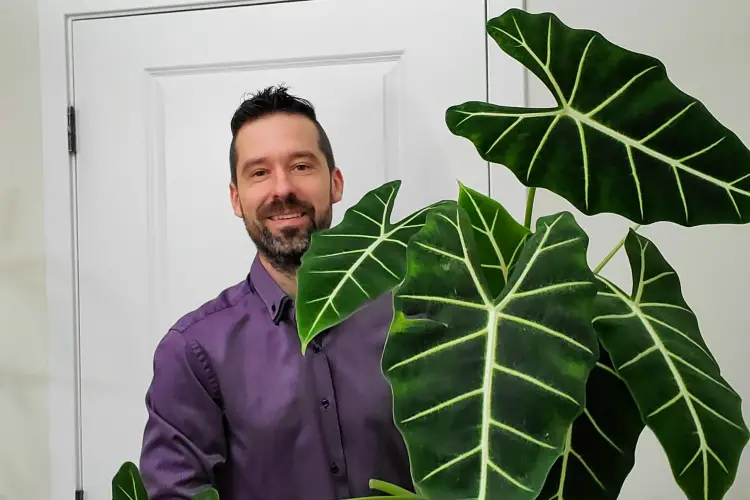
Are you struggling with Alocasia Frydek care? Having problems keeping it alive or looking beautiful? Perhaps it’s under constant spider mite attack? Continue reading this post to learn proper Alocasia Frydek care.
| Botanical Name (Latin Name/Scientific Name): | Alocasia Frydek |
| Common Name: | Green Velvet |
| Light: | medium light (1,000 lux – 3,000+ lux; 100-300+ foot candles) |
| Watering: | once the top half of the soil is dry |
| Soil: | well-draining mix |
| Repotting: | once a year |
| Temperature: | 65°F to 75°F (18°C to 24°C) |
| Humidity: | 60% to 80%, but it adapts well to lower humidity |
| Toxicity for Pets: | Yes (lips, mouth, tongue irritation and swelling, drooling, vomiting, swallowing issue) |
| Toxicity for Humans: | Yes (skin irritation, lips, mouth, tongue and throat irritation and swelling, breathing difficulties) |
| Propagation: |
|
| Pruning: | Prune dead or diseased growth or when you want the plant to branch out |
Green Velvet Alocasia is a gorgeous tropical plant; the contrast between the leaf color and the veins is just incredible, and this unique look is the reason why people love it. However, while some grow it with ease, others may struggle. Alocasia Frydek (Alocasia Micholitziana ‘Frydek’) is one of the many varieties of Elephant Ear plant and is also known as Green Velvet plant, Green Velvet Alocasia, or Frydek Alocasia.
If you want the same success with your plant as I’ve had with mine, read this Alocasia Frydek care guide. My Alocasia Micholitziana Frydek grows all year round. It lives under a grow light, and with sufficient light and warmth, it continues to put out leaves throughout the year.
Alocasia Frydek Care
Light Requirements
| Minimal amount of light: | 1,000 lux (100 FC) |
| Optimal amount of light: | 3,000+ lux (300+ FC) |
| Direct sun tolerance: | 3-4 hours |
| Category: | medium light |
Alocasia Frydek needs at least medium indirect light, between 750 and 3,000 lux (75 and 300-foot candles). Of course, if you can provide Alocasia Micholitziana Frydek with a bright light over 3,000 lux (300-foot candles), it will do even better. Remember, more light equals more photosynthesis, equals bigger and faster growth. Alocasia Frydek can handle an hour or two of weak direct sun (early morning sun or very late in the afternoon). But even if you cannot provide these conditions and would still love to enjoy Alocasia’s beauty, don’t give up.
I grow my Alocasia Frydek with zero natural light. It sits on a dresser under this grow light. I keep the grow light on for 12 hours each day. The distance between the light and the plant is about 1-1.5 feet and this is crucial; you can’t keep a light like this further away because it would be too weak.

Mr. Houseplant with its Alocasia plant, grown under a grow light
You can select the perfect light for your Alocasia Frydek here, and in case you’re worried about your electricity bill, quickly find out your electricity cost.
Whether you grow your Alocasia Frydek under natural light or under artificial grow lights, the number of leaves on the plant will depend on the amount of light the plant gets — the more light the plant enjoys, the more leaves it will have. In general, there can be anywhere from 1 to 6 leaves. If you notice some leaves die, they may be older ones and that’s perfectly normal, nothing to worry about.
Water Needs
Water your Alocasia Frydek when the top 2 inches of the soil get dry, for pots up to 6”. For larger pots, water when the top half of the soil dries out. I use a chopstick to check. If the chopstick comes out dry, it’s time to water.
The more leaves the Alocasia Frydek plant has, the faster the soil will dry out. The leaves photosynthesize, roots pull more water from the soil, water transpires through the leaves, and the soil dries out faster. So the more leaves your Alocasia Frydek has, the more often you will need to water it. With only a few or no leaves, the soil stays moist for longer after watering and can lead to root rot. So be careful not to overwater your Alocasia green velvet to prevent root rot and make sure to provide enough light so the plant can grow fast.⠀
Humidity Needs
Alocasia Frydek love increased humidity but will thrive with enough light and at the right temperature even if you have low humidity. They will likely be more prone to spider mites in environments of lower humidity where spider mites thrive.
Temperature Requirements
The ideal temperature for your Alocasia Frydek is between 65ºF to 75ºF (18ºC to 24ºC) or more. Temperatures below 60ºF (16ºC) could get to the plant to start going into dormancy.
Fertilizing
I occasionally fertilize my Green Velvet plant with the Sill fertilizer. It contains the perfect N-P-K ratio of 9-3-6 with the minerals Alocasia plants need for growth. Whichever fertilizer you use, make sure to always follow the manufacturer’s instructions. That is very important when it comes to the proper Alocasia Frydek care.
Soil
Alocasia plant loves well-draining soil. For proper Alocasia Frydek care, I recommend adding perlite and bark to any potting mix you intend to use — 3 parts potting soil, 1 part perlite, 1 part bark.

Green Velvet will beautify your home or office
Repotting
I repot my Alocasia Frydek once or twice a year. That’s how I provide it with additional nutrients and remove compacted soil and that’s how I get a beautiful, big, and healthy plant. To help the soil dry out quicker, I use a terracotta pot instead of a plastic one as part of my Alocasia Frydek care routine.
Below are the guidelines for the proper way to repot your Alocasia plants.
1. Make a potting mix — 3 parts potting soil, 1 part perlite, 1 part bark.
2. Select an appropriate pot by getting the next pot size. If your plant is in a 4” pot, get a 6” one.
3. Use the flat side of a root rake or a butter knife to loosen the soil around Alocasia Frydek , then take it out of its pot and lightly loosen the rootball and untangle the roots.
4. Fill ⅓ of the new pot with soil, put the Alocasia Micholitziana Frydek plant in, and fill the remaining space with soil.
5. Press the soil around the plant firmly and water.
You can also see the repotting Alocasia Frydek video below:
Get more information on How to Repot Houseplants (Properly) in my detailed houseplant repotting article. There you can learn how to avoid some of the common repotting mistakes.
Toxicity To Humans
Alocasia is toxic to humans. The California Poison Control System (CPCS) states that oxalate crystals found in the juice and sap of this plant, if ingested, will cause irritation and pain in the upper respiratory tract such as the mouth, lips, and tongue. Additionally, it can lead to swollen throat and problems with breathing.
Toxicity To Pets
Alocasia is toxic to pets. If animals eat it, it can cause problems such as difficulty swallowing, vomiting, and drooling. The American Society For The Prevention Of Cruelty To Animals also confirms that pain and swelling of the mouth, lips, and tongue are possible.
Ann King Filmer, a Plant Scientist from the University of California, confirms in her publication “Safe and Poisonous Garden Plants” from October 2012 that oxalate crystals from the plant can irritate the skin. Also, if chewed, they can cause stomach upset, swollen throat, pain, and breathing difficulties.
Pruning
There is no need to prune Alocasia, unless to remove dead leaves. To prune dead Alocasia leaves, use a pair of clean and sterilized scissors or pruning shears. Cut off the dead, brown leaves close to the main stem and discard them.
Propagation
There are several ways to properly propagate Alocasia Frydek listed below:
- stem cutting propagation in water
- stem cutting propagation in soil
- air layering propagation
- division
Alocasia Frydek air layering is the best way to do it, because there is no risk for your plant.
Air Layering Propagation Method
Take some sphagnum moss, moisten it, squeeze it to remove excess water, wrap it tightly around the stem, and cover with plastic.
The goal is to keep the bottom part of the main stem moist so it can grow roots. Make sure the moss is fully enclosed in the plastic, so it doesn’t dry out. If you notice moss drying out, unwrap, mist, and wrap back up.
The process of growing roots can take a few weeks, so be patient. Mine took two weeks for roots to grow.
Once the roots are several inches long, it’s okay to cut the stem and put it in soil. To make things easier, I suggest waiting until you see a large rootball inside the plastic and the roots growing everywhere. A larger root mass will help the cutting absorb water better once you cut it and pot it in soil.
To reduce the chances to infect your Alocasia Micholitziana Frydek, sterilize your pruning shears just prior to making the cut.
Check out the full video on Alocasia Frydek air layering below:
If you already tried to propagate your Green Velvet plant by cutting off the stem and putting it in soil or putting it in water, instead of going with the air layering method, you may succeed or you may not; in case you don’t succeed, the cutting is dead. To try again, you will need a new plant.
With the air layering method, you have nothing to lose. If the roots never grow, you can just remove the moss and continue growing your plant in the pot. But if they do grow, you got yourself another tropical plant.
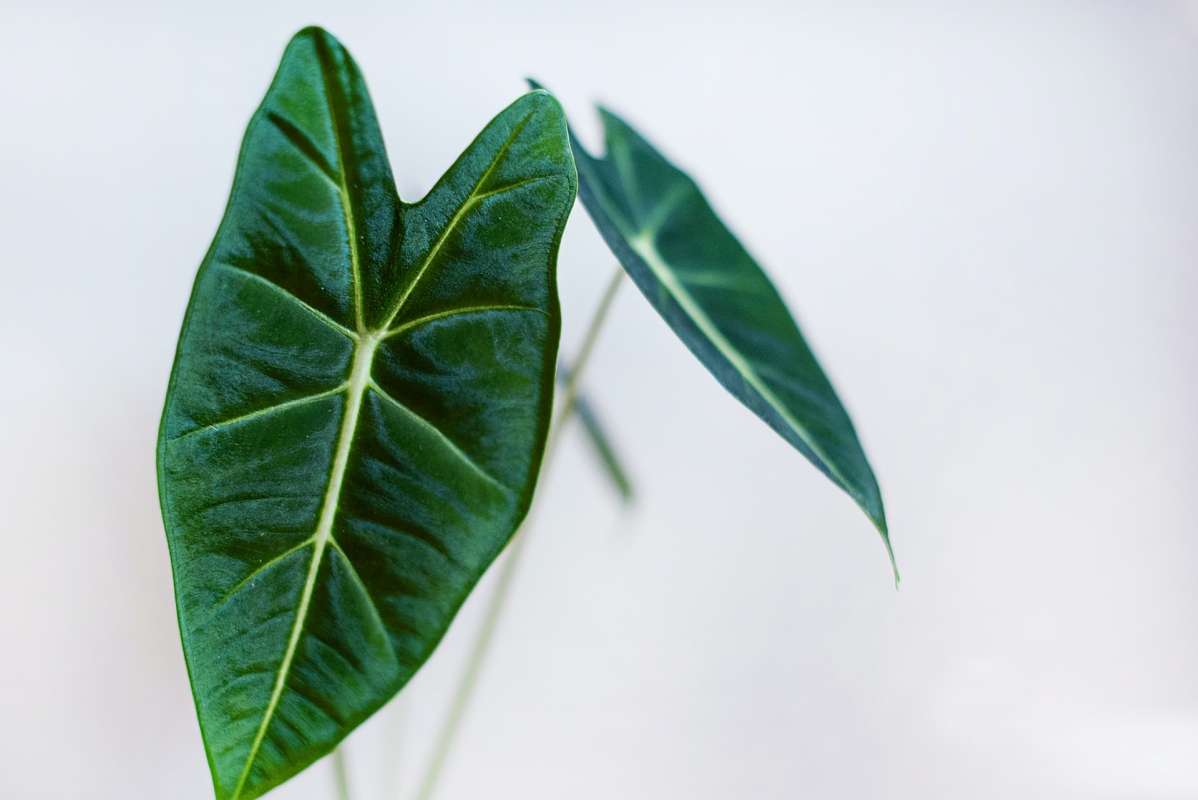
Green Velvet Alocasia levaes
Water Propagation Method
Sterilize your knife before cutting your Alocasia Frydek to reduce the chances of infection.
- Cut a stem, put it in water, add an air pump for oxygen, and a heat mat for warmth. Increased light (natural or grow light), an air pump, and a heat mat will dramatically increase the chances of successful propagation and reduce propagation time.
- About two weeks later you will see roots on the Alocasia Micholitziana Frydek.
- Once the roots are several inches long, pot the cutting in soil, and place it under a grow light.
However, you need to be careful with this propagation method as there is a possibility of killing the potted plant. If your Alocasia Frydek plant only had one stem, now it will be left with no leaves, meaning it will be using water from the soil much slower, so you need to reduce the watering amount as well as frequency. Otherwise, the soil may stay moist for too long after watering and lead to root rot.
You could wait until it grows more than one stem before trying this method.
Here is the full video on Alocasia Frydek water propagation:
FAQs about Alocasia Frydek
Why are my Alocasia Frydek leaves turning yellow?
The most common reason of Alocasia plant leaves turning yellow is completely normal, as Alocasia Frydek grows new leaves, while older leaves turn yellow and die. So it doesn’t mean you are doing something wrong in your Alocasia Frydek care routine. The plant can only support a certain number of leaves, which depends on the amount of light the plant gets. So older leaves will turn to yellow leaves, the plant will start taking mobile nutrients from the leaf, and move it to other sections of the plant where they are more needed. Once that happens, the leaf will turn brown and die.
If you notice yellowing leaves on the edges, between the veins on your Alocasia Frydek, like in the following photo, it’s likely you have a spider pest infestation.
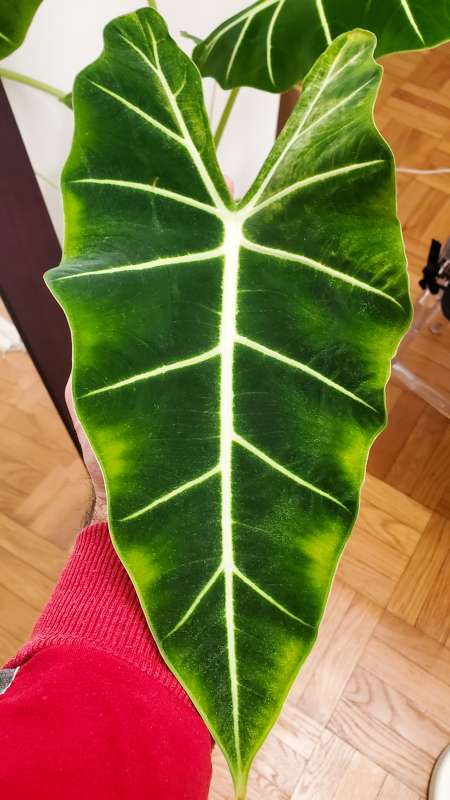
My alocasia frydek under spider mite attack. The yellow sections are the damage that spider mites caused.
Treat your plant with insecticidal soap, horticultural oil or neem oil.
Why are there water drops on Green Velvet Alocasia leaves?
If you’ve noticed droplets of water on Alocasia Frydek’s leaf edges in the morning, let me tell you that this is a perfectly normal phenomenon called guttation. It will happen more often if you water plants in the evening, and especially if you use too much water and leave some water in the saucer. When I do this, my Alocasia Frydek will be dripping all over the floor in the morning.
Here’s why guttation happens.
During the night, the roots are still taking water, but the transpiration is reduced, so excess water is moved out through leaf hydathodes, cells specialized for this purpose. This is why you will see water droplets on the leaf edges of alocasias or monsteras, especially in places with high humidity, as high humidity reduces transpiration.⠀
Take a look at what guttations looks like on my Alocasia Frydek in the video below:
Guttation is generally a good thing, as it can prevent leaf damage such as edema. Edema happens when the roots absorb water faster than the plant can use it, so when the pressure builds up inside the cells, it causes them to burst, and you can see this as leaf damage. On Fiddle Leaf Figs, for example, you will see tiny red spots which will be more noticeable on younger leaves; as the leaf matures, they aren’t as visible. On other plants, edema might remain visible forever.
⠀
In some cases, guttation might be beneficial, as more water and nutrients are supplied to the plant. But if the plant already has enough water and nutrients, I don’t think there are any additional benefits. ⠀
⠀
Since root rot is a big problem with houseplants, I would argue that guttation is a sign that watering should be slightly reduced, or at least moved to the morning. Make sure there is enough light and adequate temperature during the day so that transpiration isn’t inhibited.⠀
Why do Alocasia plants have drooping leaves?
Underwatering may cause leaves to get droopy on your Alocasia Frydek. Too little light will cause the plant to grow long and leggy, which could cause it to become droopy as it would become difficult for the stems to support themselves. Make sure to identify the problem first and then adjust. The treatment for the Alocasia Frydek drooping leaves depends completely on the issue in question.
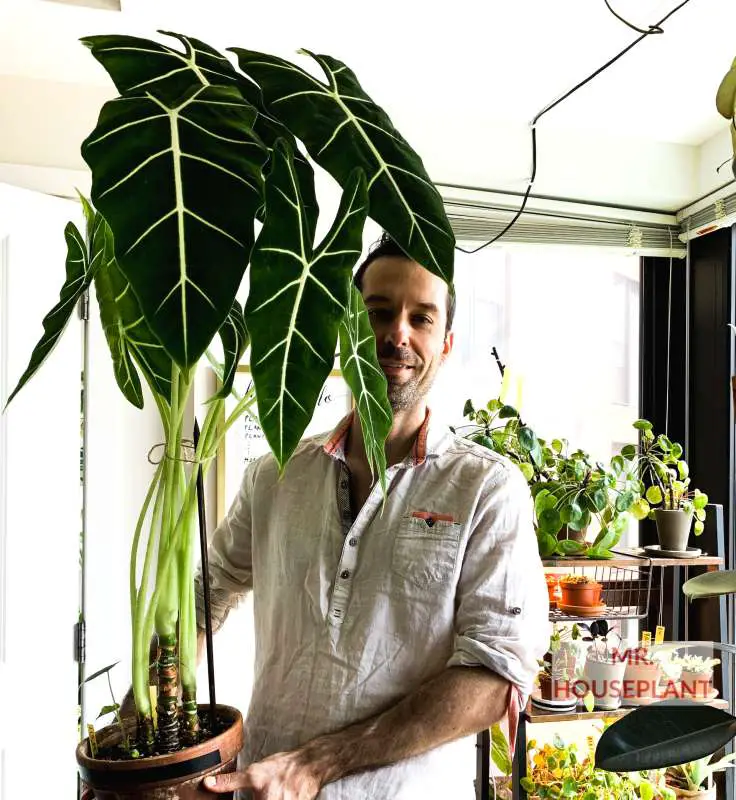
Mr. Houseplant with his Green Velvet
How long is Alocasia Frydek dormancy?
Lack of light, cooler temperatures, and dry soil will lead Green Velvet Alocasia into dormancy. This is a completely natural process that usually happens during wintertime. The plant will come back once the temperature rises and more light shines on it. You can delay and completely avoid the dormancy period by providing your Alocasia Frydek with an artificial grow light and higher temperatures (normal room temperatures). They do not need to go dormant, like for example venus flytraps. Remember, my Alocasia Frydek never goes dormant and I’ve had it for several years.
How to identify whether your Alocasia Frydek is dead or dormant?
Even if your Alocasia Frydek is left without any leaves, it may not be dead, just asleep. Check the corm; if you see rot, then the plant is dead. If the corm is firm and the roots looks good, your Alocasia Frydek plant will reemerge once the conditions are better.
More Questions on Alocasia Care?
If you have more questions on Alocasia Frydek care, don’t hesitate to schedule a consultation with me. Alocasia Frydek is one of my favorite houseplants and I will be happy to help you get a beautiful, healthy Alocasia Frydek and empower you to take care of it with ease for years to come.
Yours Truly,

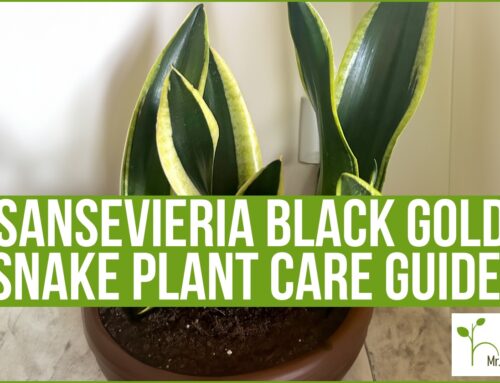
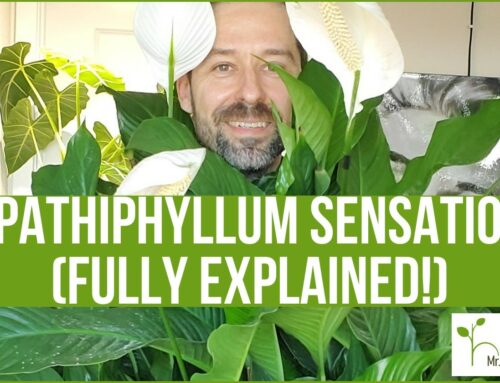
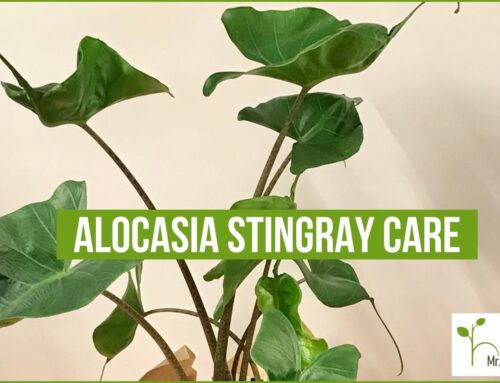


I enjoy your vids very informative
Thank you Dave, I appreciate it :)
simply the best write up on the subject. espcially like the info on lighting. I mean what exactly is medium light? Knowing its between 23 to 46 PAR is great as now I have some idea where the ideal place is for my baby Frydek. Thanks
I’m happy this was helpful Rob :)
I’m going to try to grow this stunning plant. When I seen it in the store I fell in love with the green velvet leaves. With all the awesome info you gave I think I’m going to have sucess. Thank you
Hi Marian, thank you, I’m glad you enjoyed the article :) Good luck with your new plant!
Gracias voy a seguir tus recomendaciones, creo que mi alocasia le falta luz y esta inactiva debo cambiar de lugar la pondré donde haya más luz y calor, muchas gracias!
Hi Mirtha, thank you for your feedback, I’m glad the article was helpful! Good luck with your alocasia 🙂
Great article! I found it really helpful in understanding how to take care of my Alocasia Frydek plant and ensure it thrives.
Thank you, I’m so glad you like it! 🙂